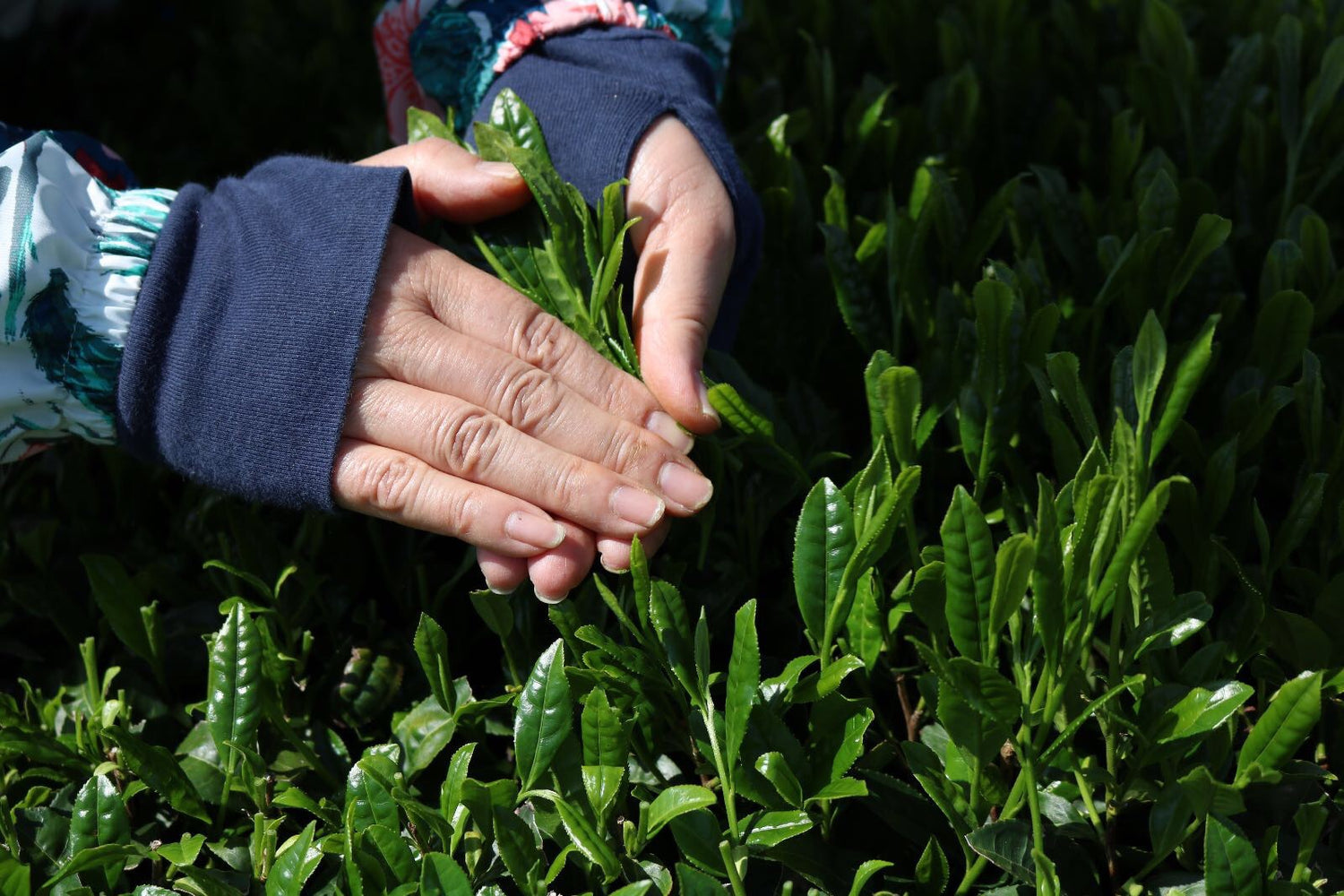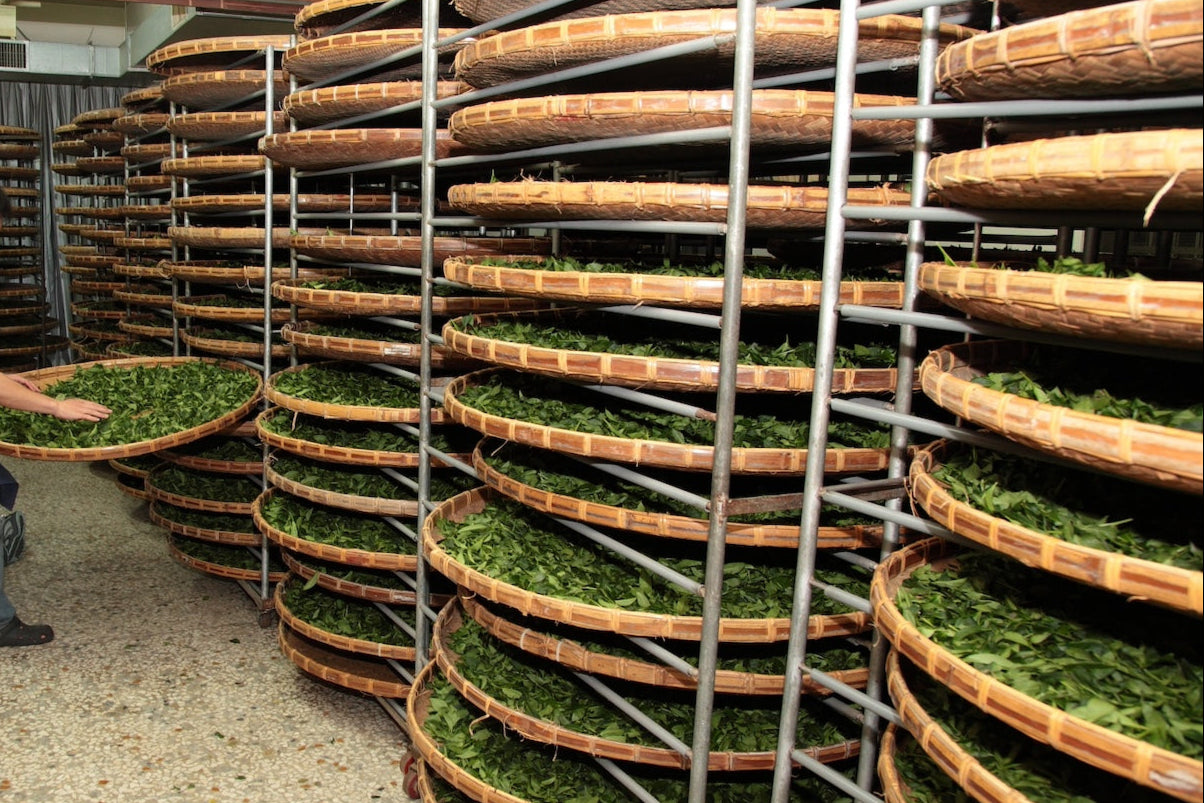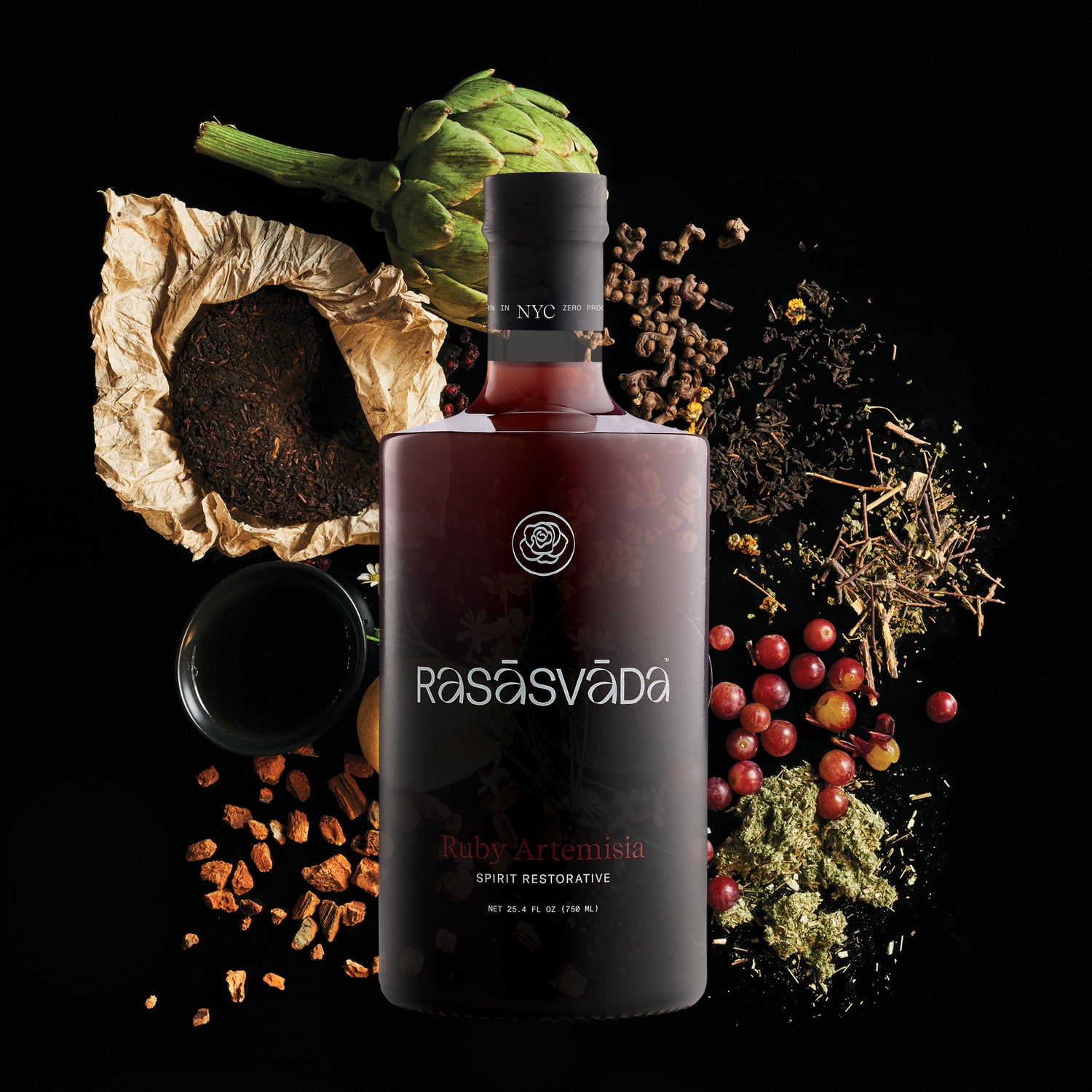Kurokoji green tea is a unique beverage that combines the antioxidant-rich catechins of green tea with the bioactive benefits of kurokoji (black koji mold, Aspergillus luchuensis), a cornerstone of Japanese fermentation. The result is a tea as functional as it is flavorful, offering a layered profile of earthy umami, tart, and sweet.
Botanical Overview

- Botanical names: Camellia sinensis and Aspergillus luchuensis)
- Family: Theaceae
- Common names: Green Tea and Kurokoji Mold; Kurokoji green tea (黒麹茶, literally “black koji tea”)
What is Kurokoji Green Tea?
Kurokoji green tea (黒麹茶, literally “black koji tea”) is a rare variety of Japanese tea made by fermenting high-quality green tea leaves with koji spores. Unlike regular green teas—steamed to preserve freshness—Kurokoji tea is created through fermentation. During this process, koji enzymes break down tannins and polyphenols.
Polyphenols are natural compounds found in fruits, vegetables, tea, and wine that protect cells from stress and damage. There are two important polyphenols that stand out in Kurokoji – flavonoids and tannings:
- Flavonoids are a family within polyphenols—a bit like saying “citrus fruits” are a family within fruits. They give plants their vibrant colors and often their bitterness, while in the body they help fight inflammation and support circulation.
- Tannins are another group of polyphenols, best known for giving red wine and dark chocolate their dry mouthfeel. Beyond flavor, tannins support gut health, protect blood vessels, and add to the antioxidant and antimicrobial strength of foods and herbs.
This artisanal process requires both the precision of tea-making and the craftsmanship of fermentation.

The Friendly Mold Behind Kurokoji Green Tea
The mold used to ferment Kurokoji green tea is Aspergillus luchuensis, also called black koji. Far from being toxic, it’s considered Japan’s “national fungus” because it’s safely used to make everyday staples like miso, soy sauce, and sake.
During fermentation, the koji mold produces enzymes that break down plant compounds in the tea, creating new flavors and unlocking nutrients. The mold itself doesn’t remain active in the finished tea; what you’re left with is a safe, shelf-stable product full of bioactive compounds and rich umami taste.
So while the word “mold” might sound off-putting, in Kurokoji, it transforms the tea in ways that enhance both flavor and wellness.
History & Traditional Uses
Within Japan’s tea culture and tradition, Kurokoji stands out as one of the most intriguing teas not only because of the fermentation process, but also its rarity. Its roots trace back to Okinawa, where kurokoji mold has long been used in awamori (traditional rice spirit) and medicinal tonics.
Culturally, kurokoji is associated with longevity and vitality—fitting, as Okinawa is one of the world’s “Blue Zones,” regions known for exceptional life expectancy. Fermentation itself has always played a vital role in Asian herbal traditions, enhancing digestion and nutrient absorption.
Despite its deep roots, Kurokoji tea remains rare, made only in select regions of Japan. Its scarcity and craftsmanship make it highly prized among tea collectors and wellness enthusiasts alike.
The Health Benefits of Kurokoji Green Tea
1. Antioxidant & Anti-Inflammatory Support
Kurokoji is rich in catechins, a specific type of flavonoid famous in green tea called epigallocatechin gallate (EGCG). Catechins are especially good at neutralizing free radicals (the unstable molecules that cause cell damage) and reducing oxidative stress (one cause of cellular aging of the cells that is being studied for links to chronic conditions). Fermentation with kurokoji enhances the bioavailability of these antioxidants, meaning the body can absorb and use them more efficiently.
Plus, polyphenols from the tea and active fermentation work together to help strengthen immune function by calming chronic inflammation and supporting our body’s defense system,
This dual action helps combat inflammation, protect cells, and support healthy aging.
2. Digestive & Metabolic Health
Kurokoji produces enzymes and citric acid during fermentation that aid digestion and nutrient absorption. Research also suggests fermented products can improve lipid and sugar metabolism, supporting weight management and balanced energy. Its umami-rich flavor may also help reduce cravings for salty or sugary snacks.
3. Cardiovascular Support
Catechins in green tea are linked to healthier cholesterol and blood pressure. The citric acid produced by kurokoji fermentation also supports circulation, making Kurokoji a gentle ally for cardiovascular protection.
4. Cognitive & Mood Benefits
Green tea naturally contains L-theanine, an amino acid studied for its possible calming properties. Fermentation may enhance the presence of compounds like GABA (being studied for their antidepressant, antihypertensive, antidiabetic and immune system enhancements), which has scientists testing Kurokoji as a supportive tea for mood balance.
Kurokoji Green Tea in Rasāsvāda

At Rasāsvāda, we highlight Kurokoji green tea for both its functional potency and its layered flavor depth and tartness to create balance in our drink, Ruby Artemisia. It contributes antioxidant richness and subtle complexity, pairing well with botanicals such as red wine grape skins, wild berries, and bitter herbs, offering both grounding and uplifting effects.
Flavor profile: Bright, tart, and slightly sweet—Ruby Artemisia blends antioxidant-rich maqui berries, tannic red wine grape skins, and earthy Yunnan Pu’erh tea with bittersweet artemisia. Sip it neat, mix it into cocktails, or add it to your coffee or a spritzer.
Sourced from: Japan
Key Takeaways
Kurokoji green tea is where ancient Japanese fermentation meets modern nutritional science. With its rare craftsmanship, drinkers can experience antioxidant richness, digestive support, and calming focus. By weaving Kurokoji into our blends, Rasāsvāda connects timeless wisdom with contemporary rituals bringing depth and mindfulness to every sip.
FAQs
Disclaimer
While red wine grape skins are generally considered safe for most people, those who are pregnant, breastfeeding, have allergies to grapes, or are taking medications such as blood thinners should consult a qualified healthcare provider before use. Dietary supplements and herbal ingredients are not regulated by the FDA in the same way as prescription drugs, so always seek professional guidance when adding new botanicals to your wellness routine.
100% plants. 0% preservatives.
Sources
Bioactive Compounds, Health Benefits and Food Applications of Grape - PMC
Ben Cao Gang Mu, Volume IX by Li Shizhen - Hardcover - University of California Press
Draksha: An Ayurvedic Perspective on Grapes — Alandi Ayurveda
The Grape Antioxidant Resveratrol for Skin Disorders: Promise, Prospects, and Challenges - PMC
The Immunomodulatory and Anti-Inflammatory Role of Polyphenols - PMC
Insights into the Anti-inflammatory and Antiviral Mechanisms of Resveratrol - PMC
Resveratrol and Vascular Function - PubMed
Influence of Resveratrol on the Immune Response - PMC
Chinese Nutrition Properties of Grape
Resveratrol Counteracts Insulin Resistance—Potential Role of the Circulation - PMC
Resveratrol and cognitive decline: a clinician perspective - PMC
The French paradox three decades later: Role of inflammation and thrombosis - ScienceDirect
